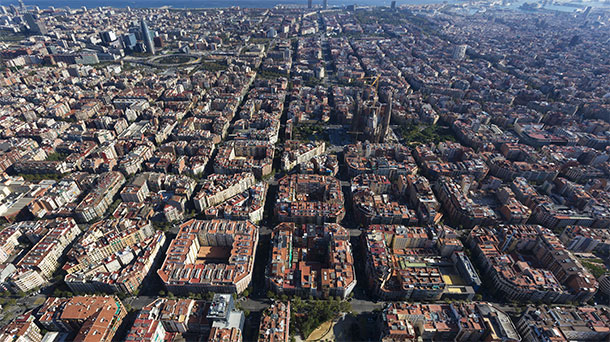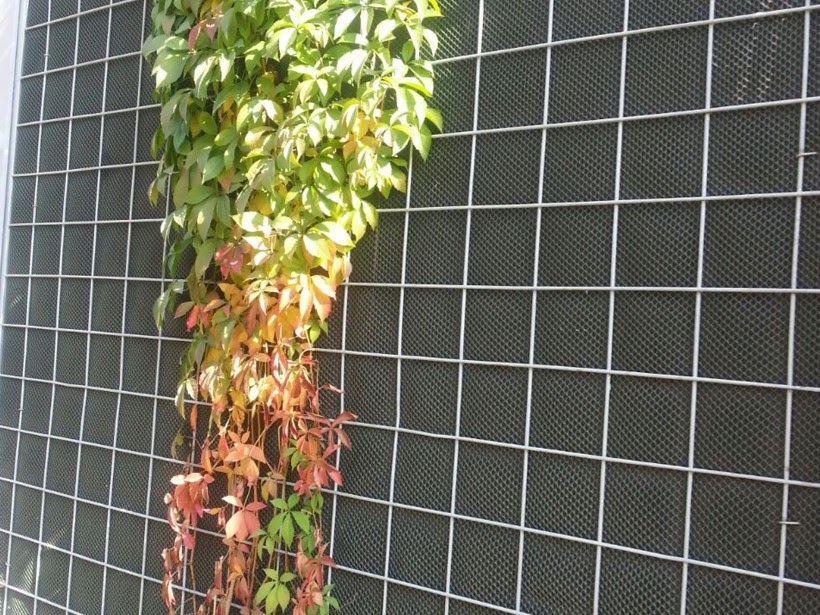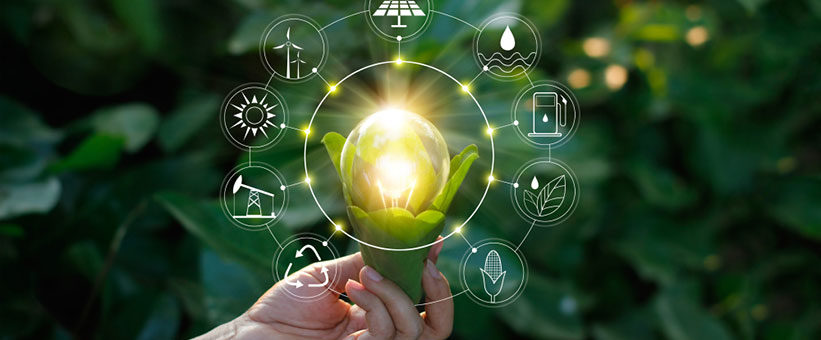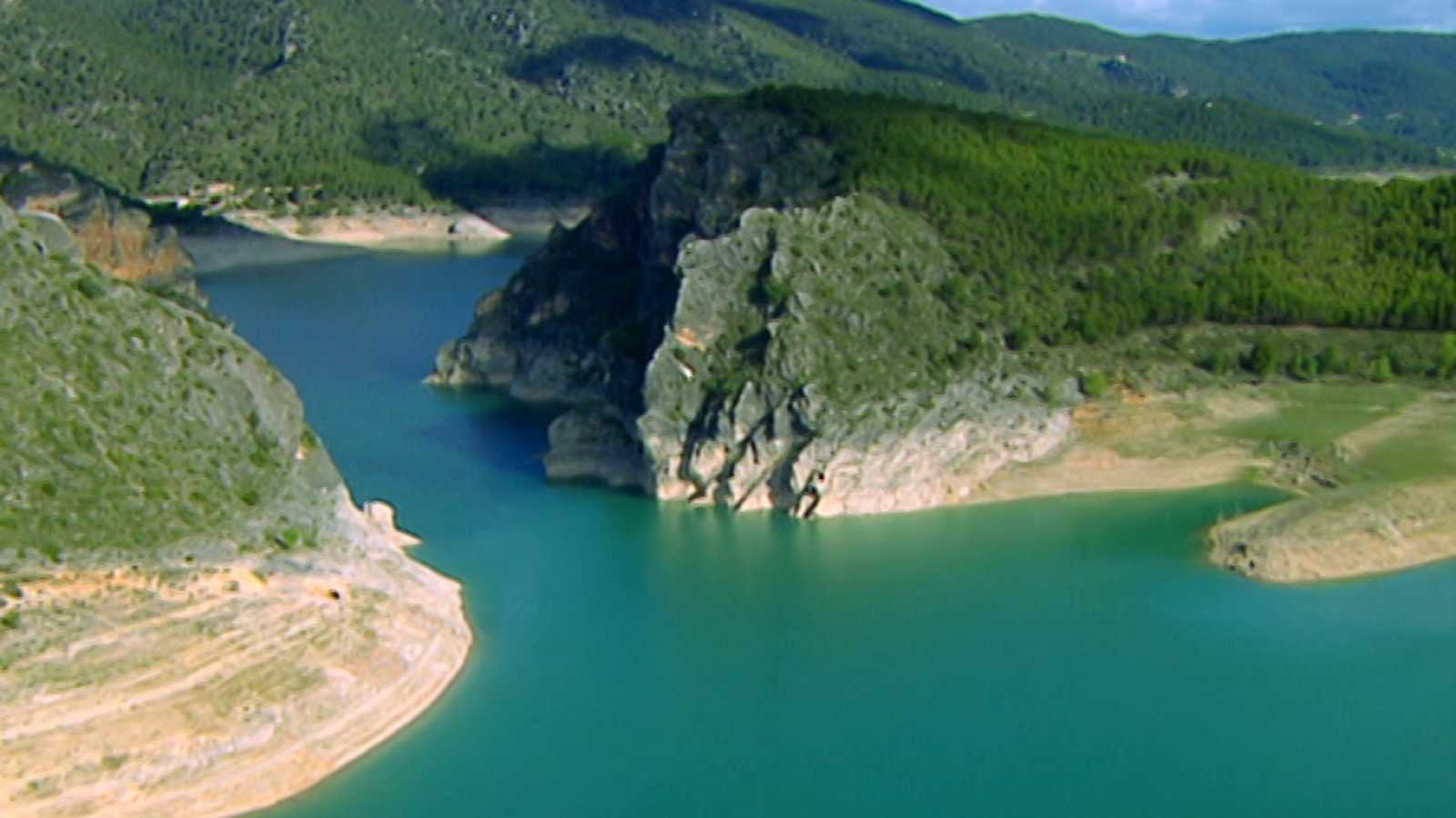World Environmental Education Day
Every January 26th we celebrate the World Environmental Education Day. Obviously, it is not a day of celebration but of awareness instead. As a society we have taken some steps to preserve the environment, but we still have a long way ahead.
On this very necessary day, we seek to sensitize society about the relationship between human development and the conservation of the planet. There two phenomena must go hand by hand, supporting each other and not in opposition as it used to happen a few decades ago. At Metalesa we believe that it is necessary to stop and reflect on this, because we care about people and improving their quality of life.
Origin of World Environmental Education Day
Let’s start by giving context to this article with a little background on World Environmental Education Day.
It has its origin in 1975, the year in which the International Seminar on Environmental Education was held in Belgrade (Serbia). At that event experts from over 70 countries participated and established the principles of Environmental Education within the framework of the United Nations programs. As a result of this milestone, known as the Belgrade Charter, the fundamental demands of Environmental Education were reflected.
Since then, every January 26th, all countries use this day to promote awareness-raising initiatives on regards for the Environment. Specifically, in Spain, the Environmental Documentation and Information Section of the CENEAM (National Center for Environmental Education) produces each year a guide to fundamental resources for environmental education, very useful to begin studying, deepening and investigating, and a basis on which to launch a series of environmental education programs and activities.
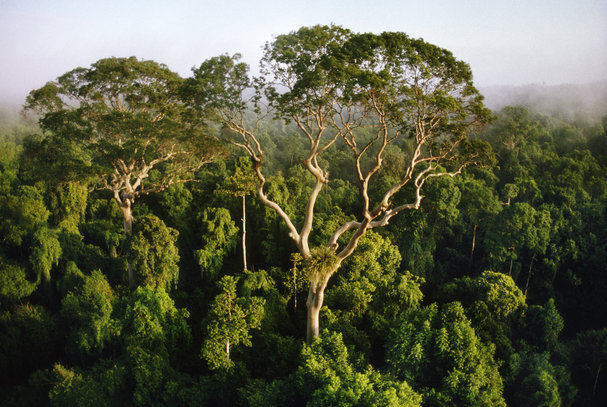
Objectives of environmental education
In general terms, Environmental Education aims to achieve the following goals:
- Awareness: Help people, both individually and collectively, acquire greater sensitivity about the importance of caring for the environment.
- Knowledge: To take care of the environment, you need to know how to do it. The population needs a basic understanding of what it means to be responsible for our environment and the resources we consume.
- Attitudes: It is essential to acquire values and promote interest in actively participating and protecting the environment.
- Evaluation capacity: Help social groups to evaluate the measures of environmental education programs.
- Participation: Help people develop their sense of responsibility by actively participating in this common goal.
Technology and Environment: an essential tandem
Human development understands that the people of a society can develop their maximum potential and lead a productive life according to their needs and interests. The increase in population, the increase in energy expenditure, the increase in the productive capacity of food … all this is very good, but we cannot ignore the fact that it also leads to environmental effects such as pollution, massive cutting of trees, depletion of water resources or global warming.
The mastery of technology to social evolution has meant that, in many situations, this development accelerates these negative consequences. However, it is also true that our actions, and how we use technology, may be part of the solution. But how can technology help reverse them?
Benefits of technology at the service of the Environment
Let’s see some examples of how technology contributes if we propose to improve the environment:
- Recycling: increase the volume of recycling and the efficiency of the recycling process of different activities and materials.
- Design of cities based on Smart Cities models: design of smart cities that satisfy the needs of the population with an optimization of the use of resources. We tell you more about Smart Cities by clicking on this link.
- Development of new forms of energy: friendly to the Environment such as wind or solar energy.
- Development of sustainable means of transport: fuel that respects the environment, such as cars or electric motorcycles.
This list could be very long, as long as the will of the whole of society wants it, because as we have said, an adequate use of technologies can have a positive impact on the protection of the Environment.
Our commitment to the environment
Every company should take into account its environmental footprint, that is, the impact generated by the service or product it offers.
At Metalesa we have always been aware of this. We know that as a company we must provide solutions and be innovative to satisfy one of the priority demands of society: the commitment to the environment and sustainability.
We achieve this task from different initiatives:
Installation of Thermo-lacquering and Zero Discharge Treatment Plant
Many of our products, for example our steel or aluminium acoustic screens, go through the thermo-lacquering process if the customer requires it. The process consists of applying a powder coating to a piece of metal that has been prepared, previously treated, and then cured in the polymerization oven.
Powder coating process is very respectful with the environment as it is a clean coating. The powder paint we use does not contain solvents, and the powder that does not adhere to the part is recovered for reuse. This use of almost 98% represents a reduction in the amount of waste generated.
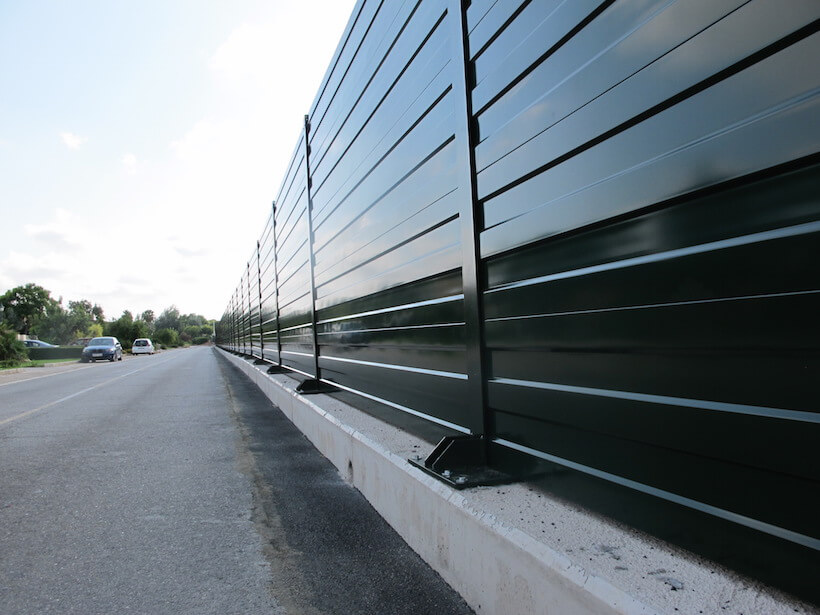
Regarding the zero discharge treatment plant, it is a technology that we use in our facilities in order to control waste and acquire a commitment to continuous improvement with sustainability. The zero discharge treatment plant allows us to contribute to the recovery of aquifers, since it allows us to reuse water in all our industrial processes through a cleaning process by electrolysis. in this way we manage to minimize the amount of water used and we manage to optimize all our resources.
Other initiatives in our facilities that favor sustainability
- Photovoltaic installation: At the end of 2020 we have installed a photovoltaic solar plant of up to 100KW of power on the roof of our factory. Technical studies estimate that with this installation we will produce up to 60% of the energy we consume per year in the development of our operations.
- Replacement of LED luminaires: In all the facilities of our factory we have installed LED lights, with this change we manage to reduce annual energy consumption by up to 15%.
- Replacing diesel trucks with electric trucks: For a long time all our trucks have been electric, therefore they do not produce CO2 emissions.
- We encourage the use of 0 paper: We try to spend as little paper as possible, and we achieve this thanks to the digitization process we are carrying out. We have managed to reduce the use of paper by up to 75%.
- Installation of EV charging points: This is one of the initiatives we have planned. We want to make different charging points for electric vehicles available to our employees throughout our facilities.
- Compliance with environmental standards and guidelines: Through our sustainable commitment, our intention is to achieve official accreditation of standards related to the Environment such as: Standards for Energy Efficiency Management Systems ISO 50001 or Carbon Footprint ISO 14067.
Our products: Acoustic Screens
One of our main products are acoustic screens, barriers specially designed to reduce a problem so harmful to people and animals, noise pollution. At Metalesa we manufacture all kinds of acoustic screens that fulfill their anti-noise function, but we have three models that are especially beneficial for our environment:
Metagreen Acoustic Screen
Rock wool is placed inside the plant screens, which, together with a green plastic mesh, facilitates the growth of vegetation in the style of a vine, generating in a few months a green acoustic wall, optimally integrated into the environment.
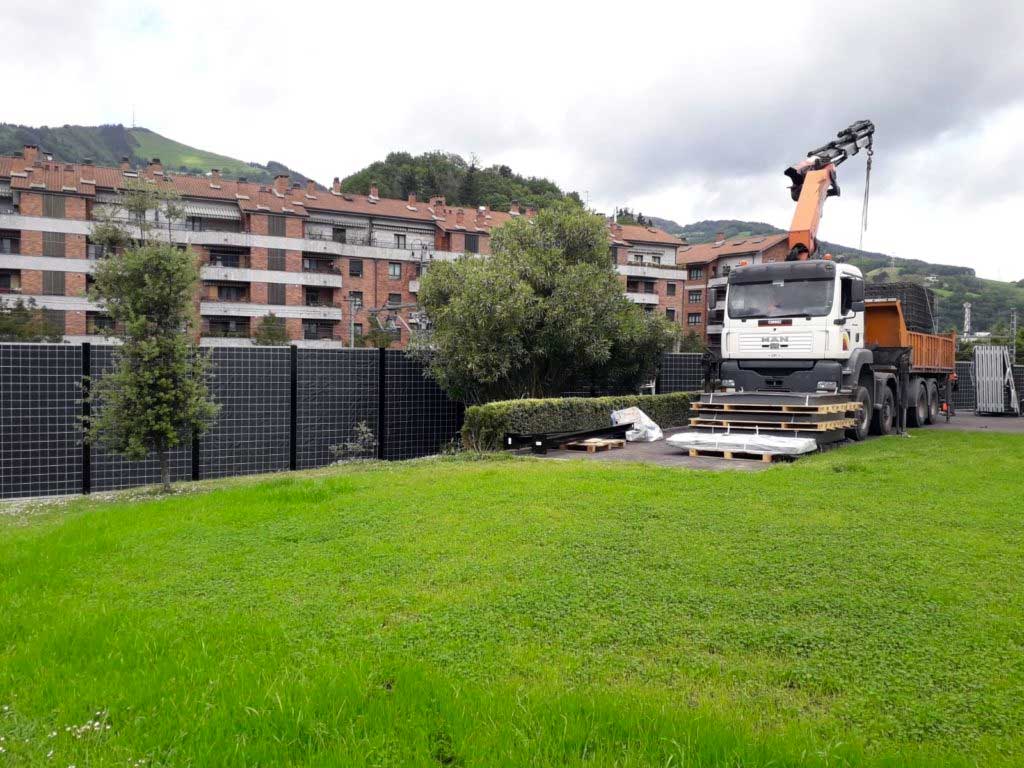
Bird Collision Screen
These types of acoustic screens are specially designed to prevent birds from colliding with vehicles or trains traveling on the tracks. This is how we achieve their preservation and protection of their migration routes.
Screens for wildlife passage
Screens for wildlife crossing are installed in overpasses equipped to protect the passage of fauna and livestock that circulate over roads or railroad tracks. These are wooden panels that are supplied with a chemical treatment that guarantees the preventive and curative action of insects and fungi, as well as solar radiation. Furthermore, the wooden panels optimize their integration into the environment.

To conclude, we will return to the task of World Environmental Education Day. To advance as a society, it is necessary to appreciate the Environment, and it is everyone’s responsibility to learn and internalize correct behaviors about it. Nature is not an inexhaustible source of resources, so we must all put our best efforts together to try to make our actions as less harmful as possible. From Metalesa we have already joined this objective. And you?
World Urban Planning Day: The importance of sustainable planning in cities
The growth of human concentration in cities and the increase in housing and traffic in urban areas are social phenomena that we have been witnessing for decades, and to which urban planning has to provide solutions. But not just any solution is worth it.
As cities grow, more needs and challenges are presented to us, and the environment is undoubtedly affected by this, a fact that we cannot afford in today's society. That cities grow is not a problem in itself, they simply have to expand and evolve, increasingly thinking about Smart Cities models, based on citizen collaboration, planning, creativity and of course, taking advantage of technology to be more sustainable. Only in this way is it possible to achieve urban and social innovation that generates the necessary efficiency in cities.
How can we achieve a more sustainable city through urban planning?
Construction of recreational areas or 'healthy enviroments'
More and more people are concentrated in cities, which generates a high concentration of people in very specific areas, where the environment is harmed, and consequently the quality of life of its inhabitants.
By healthy spaces we refer to areas such as parks, squares or any type of urban recreational areas that help dissipate population concentrations. In this sense, although urban planning plays a fundamental role, it is also necessary for people to become aware. A great example in the city of Valencia is the old riverbed of the Turia River, a green space almost 10km long that runs through the center of the city and guarantees a lung of oxygen for all its inhabitants.
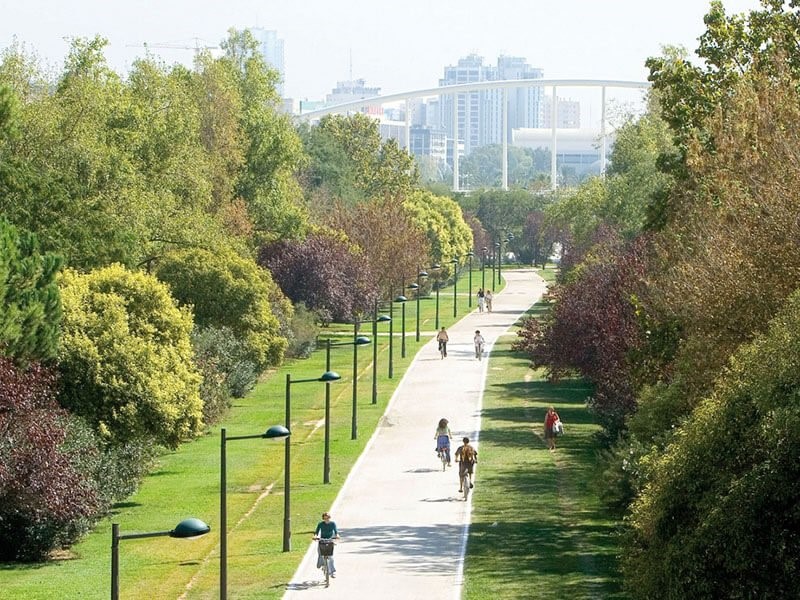
House Building
As we have mentioned before, more and more people are concentrated in cities, so it is necessary to expand the urbanizable areas. The problem is that sometimes there is no choice but to build in areas close to infrastructures such as roads, railways, airports, or industrial zones. Any of these scenarios introduces different risk factors that significantly damage the quality of life of the people who occupy these areas.
In this sense, one of the decisions that should be included in urban planning is the installation of acoustic screens in urbanizations where an acoustic study determines that they are areas susceptible to excessive noise.

Urban Mobility
In a recent post we talked about mobility and safety solutions in urban environments, given that traffic problems and challenges are beginning to emerge as a priority for city managers.
In fact, many cities are embarking on processes of adaptation to new formulas for sustainable mobility. For example, for many years now, a more sustainable awareness of urban mobility has been promoted through the use of bicycles.
This is proven with the fact that most cities have an urban reorganization underway that includes an ambitious plan for the implementation of cycle lanes.
On the other hand, the social phenomenon of electric scooters is here to stay. Currently scooters circulate on the bike lane, but who knows if in the future specific urban routes will be planned in order to guarantee the differentiation of vehicles and safety in urban mobility. It is precisely these types of issues that are intended to be made visible and promoted with World Urban Planning Day.

Innovation through urban design: the drive towards the sustainable city
Throughout the article we have spoken to you in terms of ‘urban planning’. However, the true engine that allows sustainable development based on the characteristics of a Smart City, on the design for social innovation or ‘social design’.
Innovation and urban planning by the hand of the World Design Organization (WDO)
World Design Organization is an organization that is dedicated to promoting industrial design as a profession capable of generating products and infrastructures that help create a better society, with a special focus on the environment.
The WDO recognizes cities for their effective use of design to stimulate economic, social, cultural and environmental development; among which Valencia is included as the World Capital of Design 2022.
The objective of this initiative is to turn design into a tool for sustainable social and economic development. In this sense, design is essential to improve people's quality of life and act as an agent of change. It is about finding and gathering creative proposals that are capable of giving relevance to social design and urban innovation.
In addition, although from the name of the project it seems that everything begins in 2022, it does not. The mere fact that Valencia has already been chosen as the future World Capital of Design, is already producing collective synergies to give visibility to the problems that concern urban areas in order to give them solutions working from the local to the global.
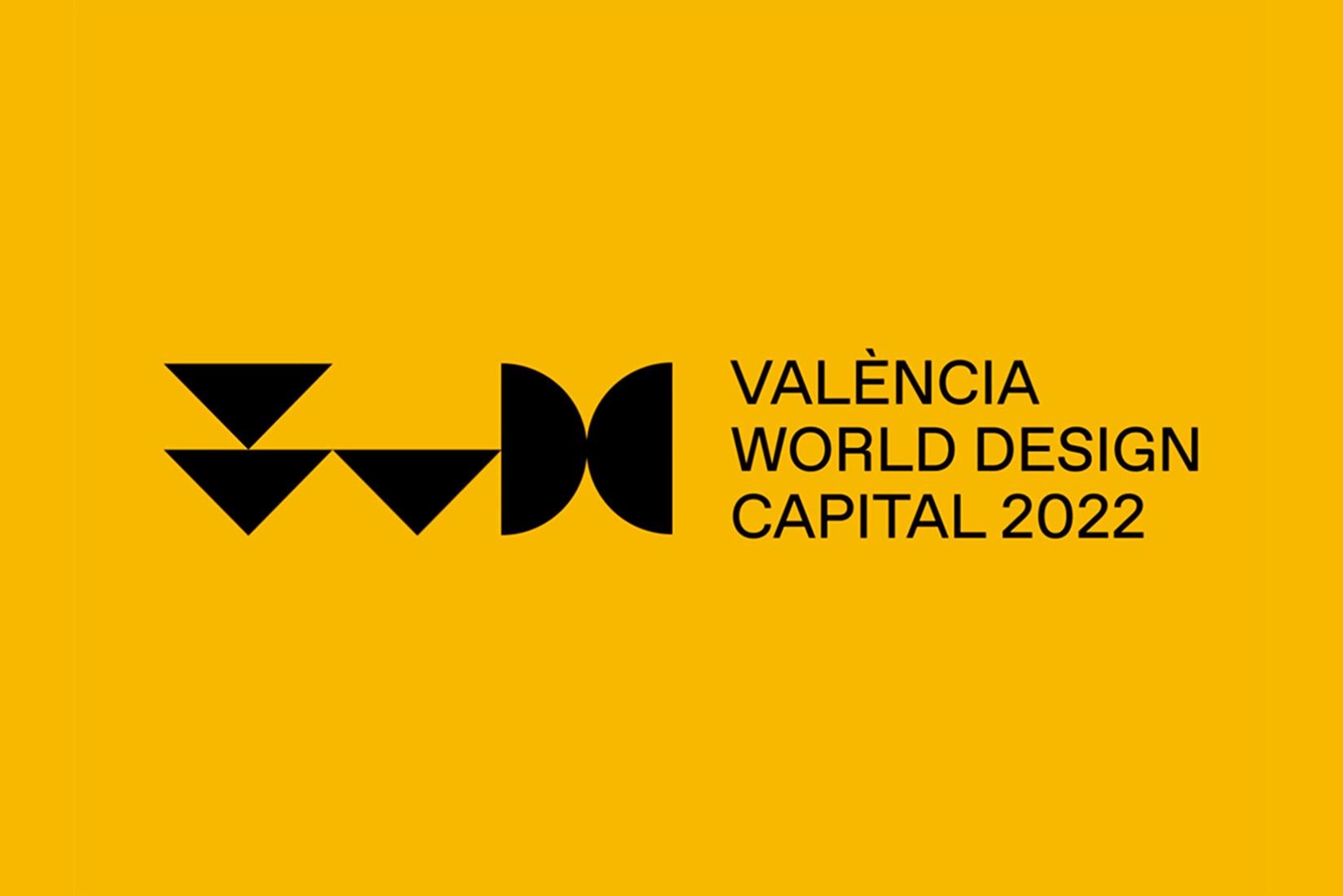
The improvement of the environment implies research and development of new urban formulas, to which social design is capable of providing answers that benefit groups. Without a doubt, our cities are changing for the better… Thanks to transcendental proposals full of creativity, design and innovation.
How does Metalesa support our commitment to sustainability?
Contributing to the improvement of people’s lives is our general objective, but in today’s article we aspire to be much more specific, explaining specific initiatives that we carry out.
As you know, at Metalesa we take care of designing, manufacturing and installing road safety systems, urban protection systems and anti-noise equipment. But we are also aware that, as a company, we must provide solutions and be innovative to satisfy one of the priority demands of our society: a commitment to the environment and sustainability.
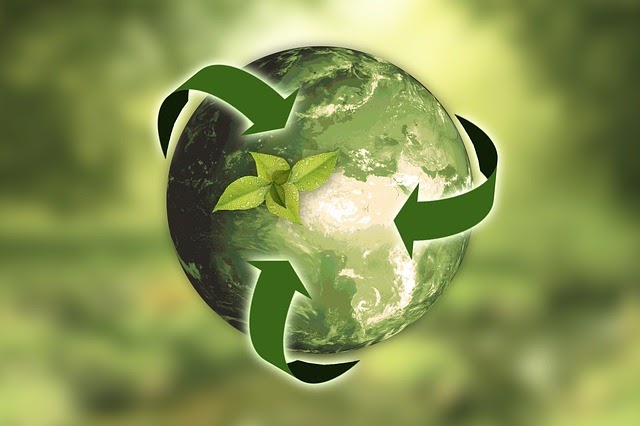
More and more sustainable facilities
Little by little, our facilities are evolving adopting measures that favor sustainability and reduce environmental impact, reflecting our commitment to preserving the environment.
Photovoltaic installation
We have concluded the installation a photovoltaic solar plant on the roof of the factory with which to install up to 100KW of power and be able to provide service to the factory in a remarkable way, especially in the months with the highest light incidence.
The preliminary studies of the project allow to advance an average annual external energy consumption savings of 60% with green and clean energy that, in times of excess, could be poured into the grid through new technologies and business models of distributed generation.

Replacement of LED luminaires
We have replaced the entire lighting installation in the factory and the offices with LED luminaires, managing to reduce energy consumption on an annual average by up to 15%.
While many may not need this reminder, we do share some reasons why installing LED bulbs is a more environmentally friendly option:
- They are not made of mercury or any other toxic substance.
- They are recyclable.
- They have a longer life than traditional bulbs. They can last up to 20 times longer.
- It is a cold light, so the chances of a facility fire from overheating are reduced to a minimum.
Replacement of diesel trucks with electric trucks
In the Metalesa factory we are dispensing with the consumption of diesel for our trucks, which are now powered by electric batteries. Without a doubt, an ecofriendly alternative.
Electric forklifts are 100% environmentally friendly as they produce zero emissions, therefore, they do not emit CO2 while in use. Of course, the treatment that is applied to the batteries of any vehicle once its life cycle has concluded must be taken into account. This issue is not resolved and the disappearance of greenhouse gases should not hide the fact that this point should be one of the priorities when addressing electrification in the following years of the mobility industry.
We encourage the use of paper 0
We are carrying out an intensive digitization process that aims to minimize the use of paper in the company. In this sense, with the measures taken to date, we have managed to reduce paper consumption by up to 75%.
Installation of EV charging points
Alongside the electrification of our fleet of forklifts, it is planned that the new car park at our facilities will include the provision of various electric vehicle charging points to employees.
In this way, we hope to encourage the acquisition by our staff of electric cars, aiming to save around 10,000 liters of gasoline per year.
Compliance with environmental standards and guideliness
From a regulatory point of view, we have also decided to go one step further with a plan to introduce official accreditation for advanced standards related to the environment in the company:
- Energy Efficiency Management Systems Standard ISO 50001: This is a certificate that guarantees that the organization has a good system for the correct use of the energy consumed.
- Carbon Footprint ISO 14067: This standard establishes a series of requirements and guidelines to carry out the quantification of the carbon footprint of the products and services offered by a company. Through this standard and the calculation of the carbon footprint, companies can know what is the impact they generate on the environment, and thus take the necessary measures to reduce it.
Products that favor sustainability: Acoustic screens against noise pollution
One of our main products are acoustic screens, barriers specially designed to end a current problem as harmful to people as it is to animals: noise pollution.
The choice of a habitat by animals depends largely on the noises that are produced in it. If an animal cannot tolerate the noise of the environment, it will hardly be able to live in it with the conditions it needs, which will cause it to migrate. If the animals disappear, the balance of the food pyramid of the place is disturbed. Ultimately, excess noise affects fauna and alters ecosystems.
Thanks to acoustic screens we can alleviate this problem through the absorption of noise that is generated on roads, railways or industries. For this reason, we have spent many years developing different acoustic screen solutions that adapt to all types of spaces and requirements.
Since in this post we are talking about the environment, we are going to highlight 3 models that are especially beneficial for our environment:
Metagreen Acoustic Screen
This type of screens, known as vegetable screens, consist of a hot galvanized steel frame, and inside it is placed rock wool or other materials, which together with a green plastic mesh facilitates the growth of vegetation on both sides of the the screen. These are panels made with sustainable and recyclable materials.
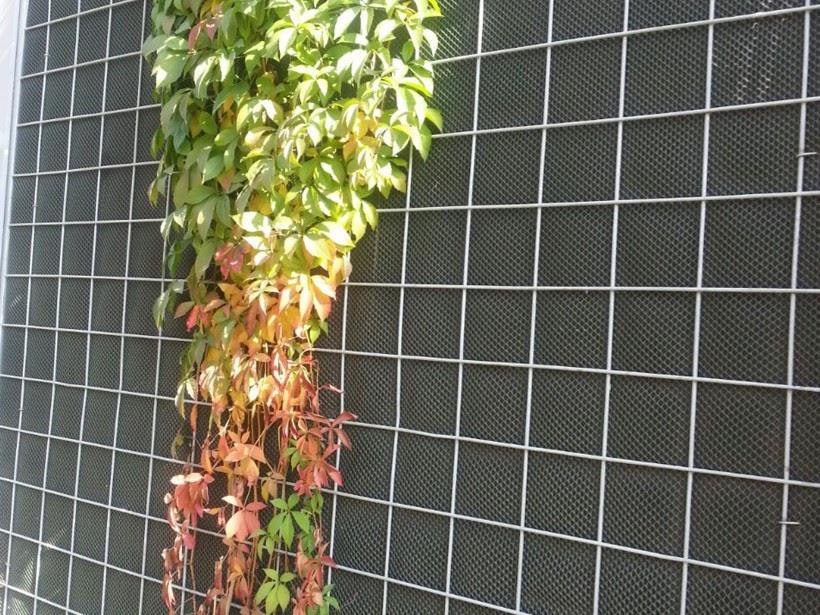
Bird Collision Screen
Bird Collision Screens are designed to prevent birds from colliding with vehicles or trains traveling on the tracks. Thanks to this type of screen, we can prevent flight areas and migratory flows from being interfered with by road or rail traffic.

Screen for wildlife passage
Screens for wildlife passage are installed in the overpasses conditioned to protect the passage of fauna and livestock that circulate along the tracks. These are wooden panels that are supplied provided with a chemical treatment that guarantees the preventive and curative action of insects and fungi as well as solar radiation. Further. The wood panels favor the respect for the environment.
As you can see, at Metalesa we work to promote a commitment to sustainability and the protection of the environment from all the areas in which we can cover. From internal initiatives such as the reduction of emissions and discharges, or the creation of training and development programs to improve the way we live, to the reduction of the environmental impact of the manufacture of our products.
One of the main pillars within Metalesa’s vision is the improvement of society and this happens through, among other things, reducing the impact generated on the environment. In addition to continuing to enhance everything that we have explained in this post, we will continue working to increase our effect on the preservation of the environment and the improvement of people’s quality of life.
We are commited to sustainability: Thermal-lacquered Installation and Wastewater Treatment Plant
At Metalesa we have always opted for sustainable development when carrying out all our processes; it is part of our business philosophy and we are very proud of it. The truth is that sustainability is central to the objective of satisfying the current needs of society; it's about reaching that goal with a committed gaze. In this article we want to let you know how at Metalesa we take care of ensuring the well-being of our planet: we will talk about the thermo-lacquering installation and our zero-discharge treatment plant.
As a starting point, we would like to remind you that in our post on Smart Cities we explained our vision regarding the concept of 'Smart City'. One of the features that characterizes Smart Cities is sustainability. At Metalesa we take on the challenge of innovating in the field of urban infrastructure and equipment, performing good resource management and advocating for sustainable social, environmental and economic development.
Thermo-lacquer: sustainable powder coating
The thermo-lacquering process developed in our facilities consists of applying a powder coating to a metal part that has been previously prepared, to be subsequently cured in the polymerization oven. Powder coatings provide a wide range of advantages over conventional paints, offering greater resistance to corrosion, heat, shock, torsion, abrasion, deterioration due to exposure to sunlight and adverse weather conditions.
Phases of the thermo-lacquered process over surfaces:
Phase 1: Pre-treatment
It consists of applying a treatment prior to the powder painting process that prepares the metallic elements to facilitate the adhesion of the paint and ensure a higher quality and durability anti oxidation.
Phase 2: Drying
The metal pieces are placed in an oven (drying tunnel) at high temperatures to remove moisture and prepare them for later lacquering.
Phase 3: Painting Booth
For parts up to 7.500mm long, the process is performed using automated robots and touch-up guns for an excellent finish.
Phase 4: Polymerized oven
Once the powder layers have been applied to the pieces, a heat treatment is carried out by introducing them in the oven at temperatures up to 220 ºC
Advantages of Thermo-lacquering Treatment
As we have already mentioned, its resistance to corrosion is one of the great advantages of this type of painting process since it increases the durable life to the pieces. However, this is not the only advantage of thermo-lacquering that is worth highlighting:
- Panel coatings finishes are very attractive. Screens can be lacquered in any of the colours of the RAL range, a code that defines a colour using a set of digits.
- The thermo-lacquering process is very environmentally friendly since it is a clean coating: the powder paint does not contain solvents, and the powder that does not remain attached to the piece during the treatment can be recovered for reuse. In fact, the use of this excess dust can be up to 98%, so that the generation of waste is greatly minimized. At Metalesa we use thermo-lacquering in order to be respectful with the environment.
Applications of thermo-lacquering in Metalesa
The cladding of facades with thermo-lacquer panels is a growing trend because of the advantages it presents. Our steel or aluminium screens for noise pollution are treated in our thermo-lacquering facilities.
These types of anti-noise screens also serve our goal of facing a global concern of the planet, noise pollution. This problem affects both people and the environment, and that thanks to our acoustic screens it can be effectively reversed.
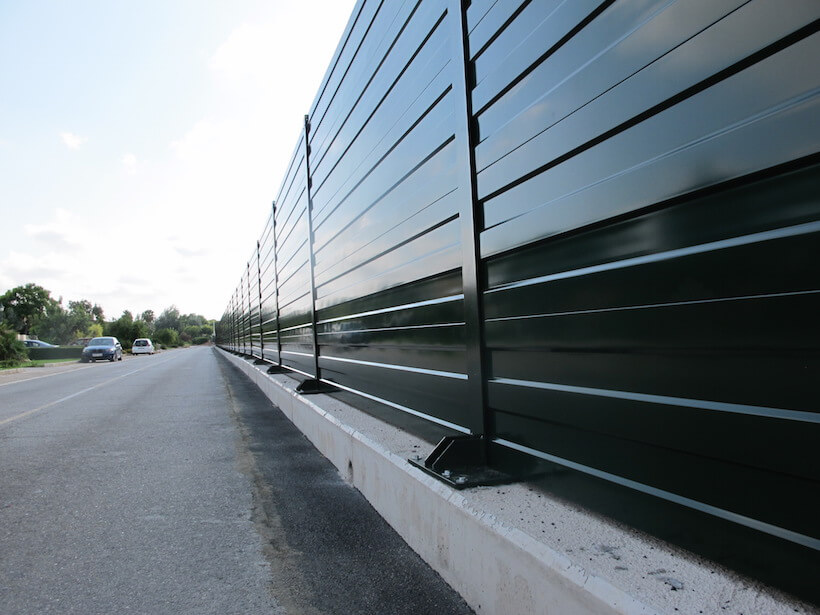
Zero Discharge Treatment Plant: towards optimization
Metalesa is committed to preserve the environment, controlling waste and using products with a low level of contamination. That’s why we have a treatment plant with Zero Dumping technology. Thus, current environmental legislation is complied and commitment to continuous improvement acquired.
Thanks to our zero discharge treatment plant, we achieve one of our environmental objectives: we contribute to the recovery of aquifers by reusing water in our industrial processes, minimizing the amount of water used and optimizing our resource consumption.
Within the theory of the circular economy model, the reuse of water is seen as a novel perspective for the implementation by companies. However, at in Metalesa we have always counted on a zero discharge facility to comply with our sustainable purpose. And such will we continue to implement the most cutting-edge measures at our reach!
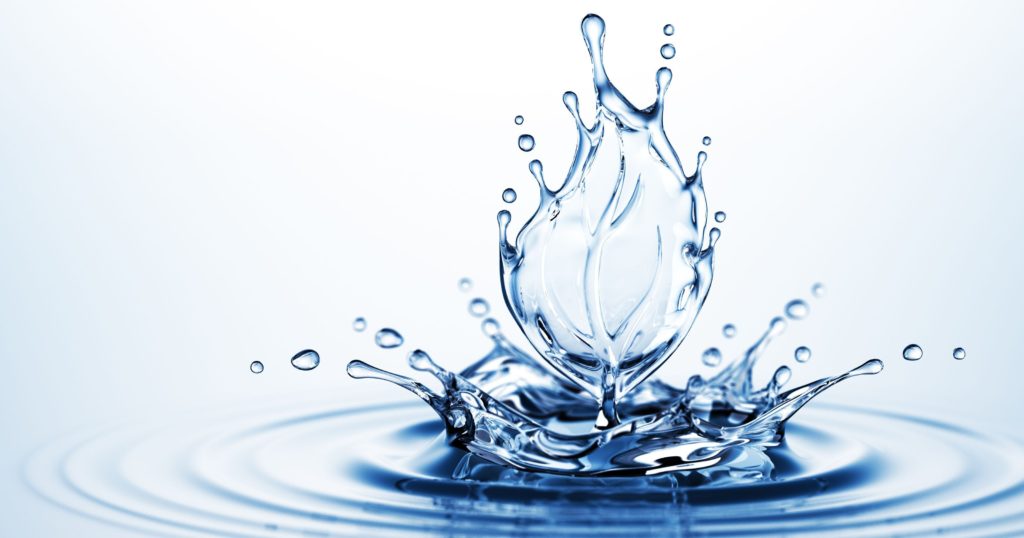
If you believe in our way of doing things during our long history and need our services, do not hesitate to contact us.
World Environmental Education Day: noise pollution
Today is a very important day for our planet. January 26th celebrates World Environment Education Day with the aim of raise people’s awareness of protecting nature.
Environment education is oriented to develop strategical models that pivot around sustainability. That’s why the environmental goal must be considered in any business strategy, and in Metalesa, we are well aware of this.
Environment Education Goals
Awareness: promote society’s interest to the problems provoked by ignoring environmental care. Any little action counts.
Knowledge: Once this interest is developed, next step is to educate. ¿How can this be done? Something can always be done both at personal and collective point of view.
Actitudes: this means proactivity. Just saying is not enough, it’s time to take action!
Assesment capability: if we implement measures in environment’s favour, we need to measure its actual impact.
Take part: Encourage people to be part of the solution
In Metalesa, as experts in road safety, there is an environment problem against which we need to prioritize our actions: noise pollution. That’s why from our very beginning, we have worked to reduce this acoustic pollution coming from road and railway traffic.
What is noise pollution?
Noise pollution refers to noises or vibrations present in the environment that could eventually be harmful for people’s or any beings health.
Noise excess in a certain place can affect negatively, even if we don’t feel it.
What are noise consequences for health?
- Audition loss or listen to beeps.
- Psychological problems like anxiety, stress or aggressivity.
- Physical problems like increase of arterial pressure, heart rhythm or breathing alterations.
- Problems related with sleep and rest, that decrease attention and performance, both at work and school
How does noise pollution affect to animals and plants?
Noise pollution produces harmful effects to a number of species, affecting their health and behaviour of animal and plants, as well as their ecosystems
Some of these effects are:
- Birds that depend on their ear to hunt are seriously affected by industrial noise.
- Noise disturbs feeding and nursing patrons of some animals, which has been identified as a factor that contributes to certain species extinction.
- Airplane noise and their sound waves have been identified as cause of decrease of reproduction success with a number of animals.
- Military sonar and the “marine bubble” of petrol explorer boats have been responsible of the death of thousands of dolphins and whales.
In order to acoustically isolate infrastructures and machinery in industries, residential and commercial areas from people and environment, in Metalesa we manufacture and install a wide range of noise barriers.
Range of noise barriers for acoustic pollution
Metallic noise barrier – steel or aluminium
These noise barriers consist of vertical superposed panels that can be adapted to high and wide project requirements. Its absorbing face present holes that allow noise waves to be absorbed by the rock wool in the interior of the panel. The other side is plain and performs as reflecting face.
Both acoustic and mechanical performance of the panels have been tested in accredited laboratories.
The advantages of this type of noise barriers are as follows: optimum isolation, aesthetics oriented to environment integration, easy instalment, thermo-lacquered…
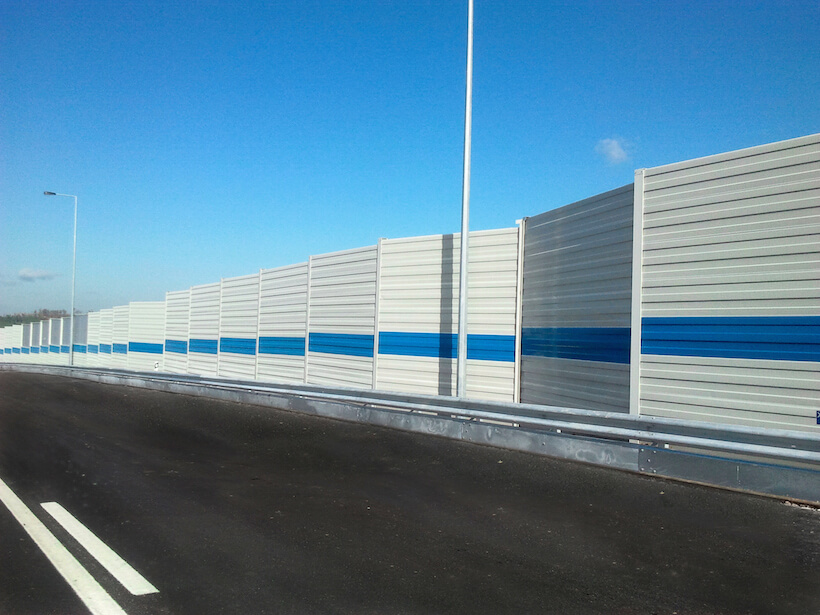
Methacrylate noise barrier
These transparent screens for noise pollution present a wide variety of designs optimized for road and railway infrastructures, for hotels or residential areas that require noise attenuation.
The screen is formed by a of 15-20mm methacrylate panel held by a beam structure. All components are very easy to install.
Metallic noise barrier with mesh / Green panel
Apart from it tested acoustic performance, it’s especially designed to be integrated into the nature environment.
It consists of rock wool supported by green plastic mesh on both sides that facilitates the growth of plants.
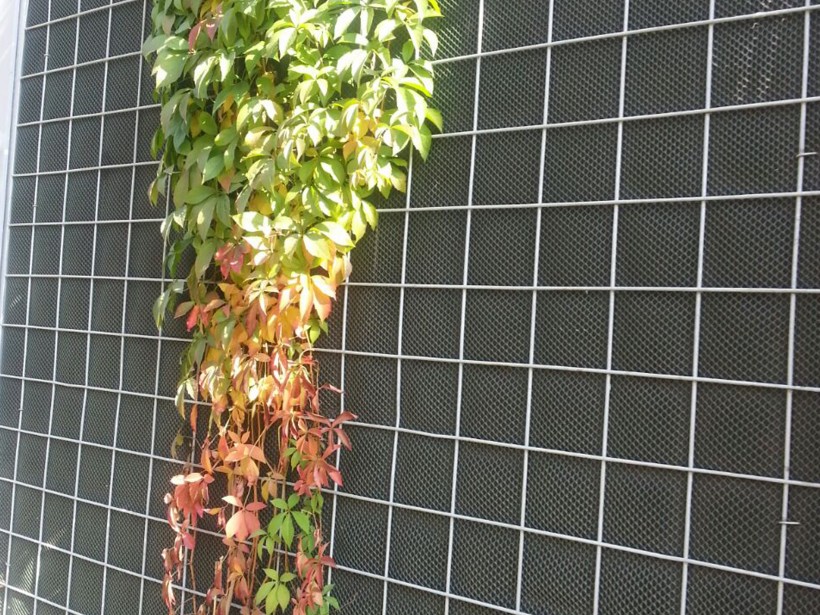
Wooden noise barrier
Wooden screen against noise pollution are perfect to satisfy aesthetic requirements in our roads. The absorbing face is formed by wild pine slats.
Wall covering
Manufactured from hot-dip galvanized panels, it is used to reduce noise effects in the interior and exterior of tunnels, as well as in inferior passes.
Its structure is very easy to install and repair in case of accident inside the tunnels.
Because the World Environment Education Day should not only be celebrated one day! Let’s become aware, our planet asks for it. Should you require our services around noise barriers, don’t hesitate to contact us.
METALESA completes the viaduct over the Tajo river of the Madrid-Extremadura high-speed line
In April 2019, METALESA completed work on the Cañaveral-Alcántara Reservoir section of the construction project of the Madrid-Extremadura high-speed line between Tayuela and Cáceres.
This section includes a 1,488 metre long viaduct on the river Tagus, with a signature 324 metre central arch span. At the same time, two bridges have been projected, 162 metres on the Regato de Cuervo and on the 114 metres on the Roman road Vía de la Plata.
https://www.youtube.com/watch?v=pi-UzgrTcfA
METALESA has been responsible for manufacturing and installing all the metal equipment for this section, specifically more than 3,000 metres of bird protection screens, 636 metres of ADIF railings, 226 metres of ADIF vandal-proof fencing and 180 metres of our META16 parapet with H3 containment level for overpasses.
With this project, METALESA further consolidates its position as a leading company in the roll out of the national high-speed network, in which it has been actively involved for many years, through many recent projects in the Basque Y and the Madrid-Galicia line.


